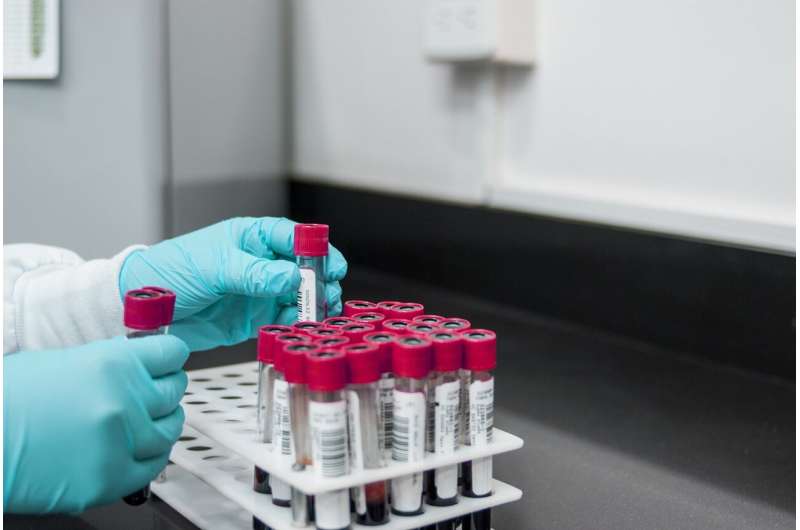This article has been reviewed according to Science X's editorial process and policies. Editors have highlighted the following attributes while ensuring the content's credibility:
fact-checked
peer-reviewed publication
trusted source
proofread
Drawing a tube of blood could assess ALS risk from environmental toxin exposure

Over the last decade, research at Michigan Medicine has shown how exposure to toxins in the environment, such as pesticides and carcinogenic PCBs, affect the risk of developing and dying from amyotrophic lateral sclerosis.
Now, investigators have developed an environmental risk score that assesses a person's risk for developing ALS, as well as for survival after diagnosis, using a blood sample.
The results are published in the Journal of Neurology, Neurosurgery and Psychiatry.
"For the first time, we have a means collecting a tube of blood and looking at a person's risk for ALS based on being exposed to scores of toxins in the environment," said first author Stephen Goutman, M.D., M.S., director of the Pranger ALS Clinic and associate director of the ALS Center of Excellence at University of Michigan.
Researchers obtained over 250 blood samples from participants in Michigan both with and without ALS. They calculated individual risk and survival models using 36 persistent organic pollutants.
Several individual pollutants were significantly associated with ALS risk. However, the risk for developing the disease was most strongly represented by a mixture of pesticides in the blood.
When considering the mixture of these pollutants, a person who was in the highest group of exposure had twice the risk of developing ALS compared to someone in the lowest group of exposure.
"Our results emphasize the importance of understanding the breadth of environmental pollution and its effects on ALS and other diseases," said senior author Eva Feldman, M.D., Ph.D., James W. Albers Distinguished Professor at U-M, the Russell N. DeJong Professor of Neurology at U-M Medical School and director of the NeuroNetwork for Emerging Therapies at Michigan Medicine.
The research team's first understanding of the environment's impact on ALS came in 2016 when investigators found elevated levels of pesticides in the blood of patients with the disease.
They later uncovered that exposure to organic pollutants advances ALS progression and contributes to worse outcomes.
"When we can assess environmental pollutants using available blood samples, that moves us toward a future where we can assess disease risk and shape prevention strategies," Feldman said.
"Environmental risk scores have been robustly associated with other diseases, including cancers, especially when coupled with genetic risk. This is a burgeoning application that should be further studied as we deal with the consequences of pollutants being detected throughout the globe."
More information: Stephen A Goutman et al, Environmental risk scores of persistent organic pollutants associate with higher ALS risk and shorter survival in a new Michigan case/control cohort, Journal of Neurology, Neurosurgery & Psychiatry (2023). DOI: 10.1136/jnnp-2023-332121





















